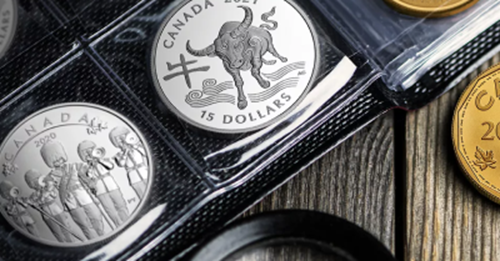Holding on to the Legacy of Bluenose
- Oct 26, 2021
- History
- 5 MINUTES READ
In a sea of animal-themed coin designs, the ship on Canada’s 10-cent piece instantly stands out. Those who don’t know the story of Bluenose may wonder why a two-masted schooner still resonates with us today, but generations of Canadians have carried the image of Bluenose in their pockets, and they also carry the ship’s story in their hearts. They know this treasured and iconic image as a representation of Canada’s maritime history and fishing industry, but in the minds of many Canadians, Bluenose means something more.
In a sea of animal-themed coin designs, the ship on Canada’s 10-cent piece instantly stands out. Those who don’t know the story of Bluenose may wonder why a two-masted schooner still resonates with us today, but generations of Canadians have carried the image of Bluenose in their pockets, and they also carry the ship’s story in their hearts. They know this treasured and iconic image as a representation of Canada’s maritime history and fishing industry, but in the minds of many Canadians, Bluenose means something more.
A symbol of hope, of national pride
When Bluenose was launched on March 26, 1921, the world was still recovering from the horrors of the First World War and the deadly Spanish flu pandemic. Canadians were in need of a good-news story that would lift spirits, and Bluenose repeatedly gave us reason to cheer.
In response to the American victory in the inaugural International Fisherman’s Cup Race (1920)—a victory described as a “Triumph of Americanism” by then-governor of Massachusetts, Calvin Coolidge—Bluenose was designed, built and launched in hopes of returning the trophy to Nova Scotia and restoring the fleet’s (and Canada’s) pride. And that’s exactly what Bluenose did in its very first year at sea.
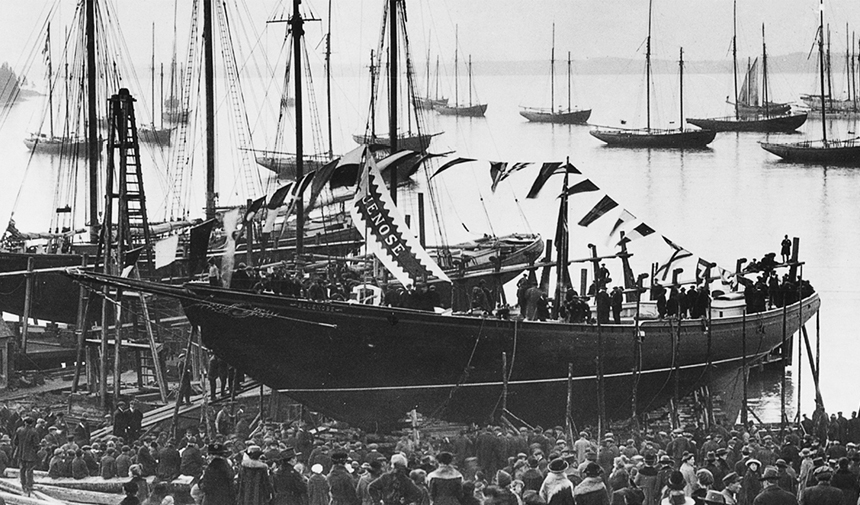
Throughout the 1920s and 1930s, the pride of Lunenburg, Nova Scotia, held this nation’s attention and became a rallying point for all Canadians. After the inaugural win in 1921 against American challenger Elsie, Bluenose made international headlines with a follow-up victory in the 1922 races against Henry Ford; a controversial (and bitterly disputed) tie with Columbia in 1923; and victories in both the 1931 races and a re-match in 1938 against American challenger Gertrude L. Thebaud, which had previously handed Bluenose a rare defeat in the 1930 Lipton Cup.
By the time Emanuel Hahn’s “fishing schooner under full sail” first graced the 10-cent coin in 1937, the ship that inspired the portrait had already established itself as a world-famous goodwill ambassador of Canada, with appearances at the Chicago World’s Fair and at the Silver Jubilee of King George V. As the holder of a title that no challenger could wrest away for two decades, Bluenose’s racing feats helped bolster a young nation’s confidence and became a beacon of pride that endures even now.
A symbol of resilience, hard work and perseverance
In spite of all the glory and accolades, Bluenose’s primary purpose was to be a working fishing vessel; behind all those racing victories were the many gruelling seasons spent fishing offshore, and record catches that cemented Bluenose’s reputation as the “highliner” of the Lunenburg fleet.
Bluenose’s racing feats helped build the international reputation of the Grand Banks fishery. But in the eyes of Canadians, and especially Nova Scotians, Bluenose had become the proud representation of our ingenuity and craftsmanship, of our maritime history, our seafaring traditions and our skills. It was, and continues to be, a cherished symbol of the resilience and tenacity of the brave souls who have made their living on the water—and no one embodied this more than Bluenose’s skipper, Captain Angus Walters.
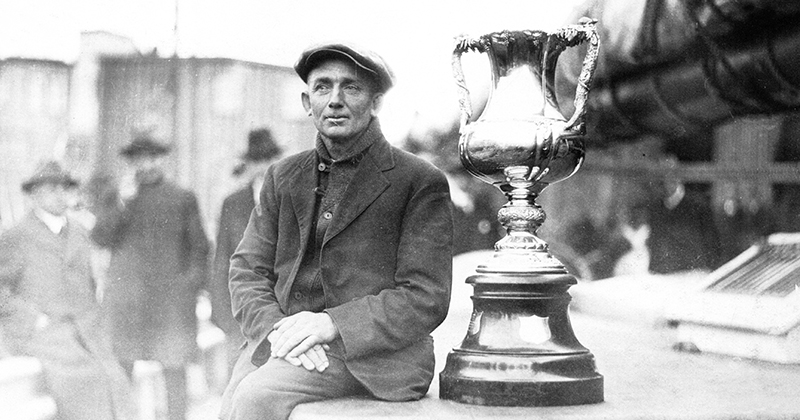
From the very beginning, Walters was key to Bluenose’s successes, having supervised the build and skippered it to victory with an almost obsessive fervour. A former doryman, Walters’ legacy and that of Bluenose are forever intertwined. Though he retired in 1940, Walters retained ownership of Bluenose until 1942, when mounting debts and waning interest in the aging schooner forced him to sell Bluenose. It was purchased by the West Indies Trading Company, which operated Bluenose as a freighter in the Caribbean until it foundered off the coast of Haiti in 1946—a rather inglorious end for Canada’s sailing champion.
A piece of our past
Today, Bluenose lives on through the images that continue to spark joy and inspire Canadians, including those featured on all our Bluenose-themed coins.
Over the years, we’ve heard from collectors who have shared their stories of Bluenose and what the portrait on the 10-cent coin represents to them. For many, the schooner’s continuing presence on our coins helps preserve the Bluenose legacy and the memory of the age of sail—a time long gone, but never forgotten.
Ultimately, the image on Canada’s 10-cent piece is a celebration of our ability to weather the elements, to endure; it’s a reminder that with hard work and perseverance, we can triumph over adversity. Perhaps that’s why we continue to tell the story of Bluenose more than a century after the winds of the North Atlantic first filled its sails.
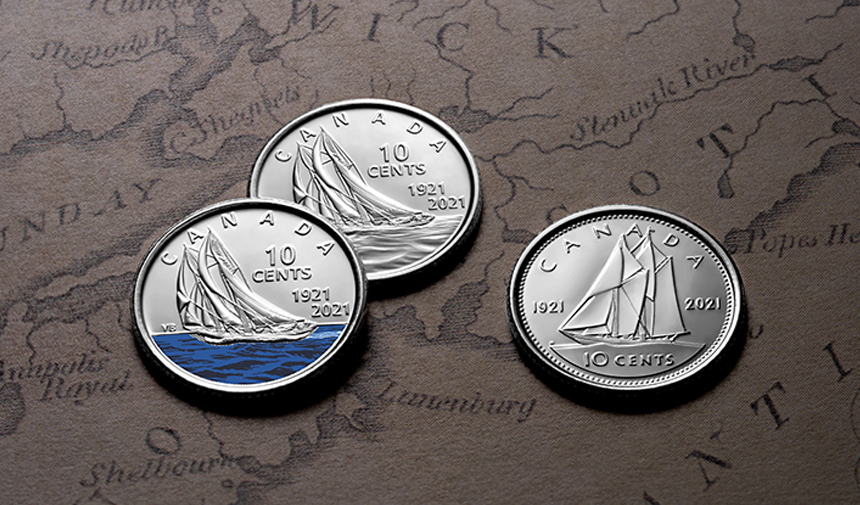
Historical photos: W.R. MacAskill, Nova Scotia Archives
‘Bluenose’ is an official mark adopted and used by the Nova Scotia Department of Communities, Culture and Heritage pursuant to the Trademarks Act (Canada). It is used by the Royal Canadian Mint with the Department’s permission.
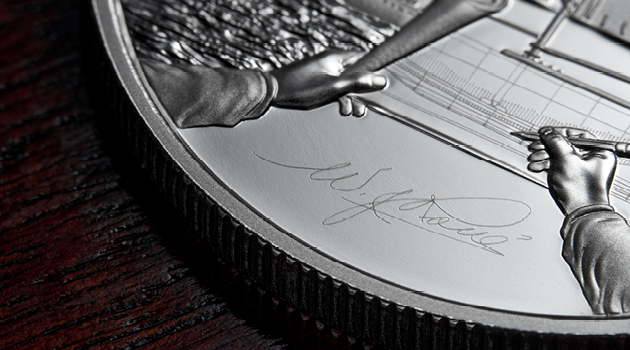

William J. Roué: The vision behind Bluenose
It was 100 years ago, on March 26, 1921, that Canada’s most famous schooner was launched at Lunenburg, N.S., where Bluenose quickly sailed into Canadian history. But the launch is just one chapter of an inspiring story.
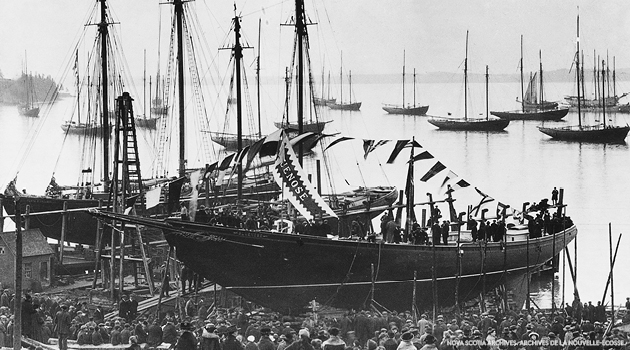

Launching a legacy: Bluenose at 100
Imagine the excitement of seeing a newly built Bluenose take to the waters for the very first time! It happened 100 years ago, on March 26, 1921, at Lunenburg, N.S., where a large crowd of onlookers erupted into cheers when Bluenose was officially launched.
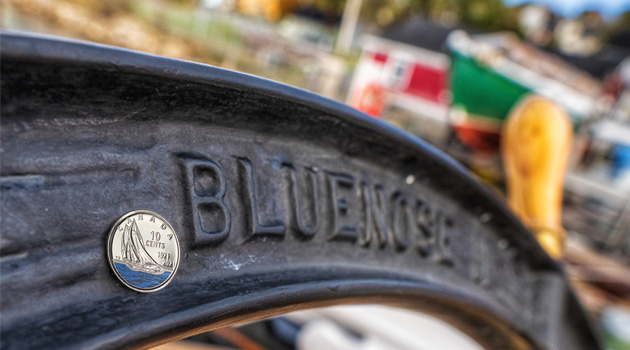

The Dime and its Colourful History
As 2021 takes us aboard the centennial journey of Bluenose, sail back in time to discover the stories our dime has shared through its designs in this blog.


